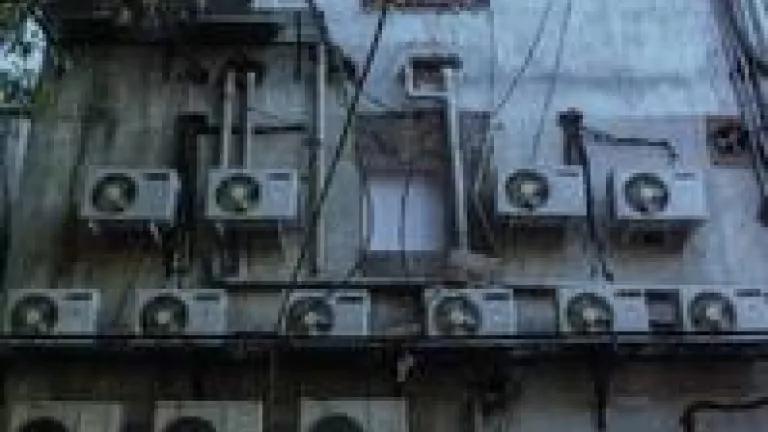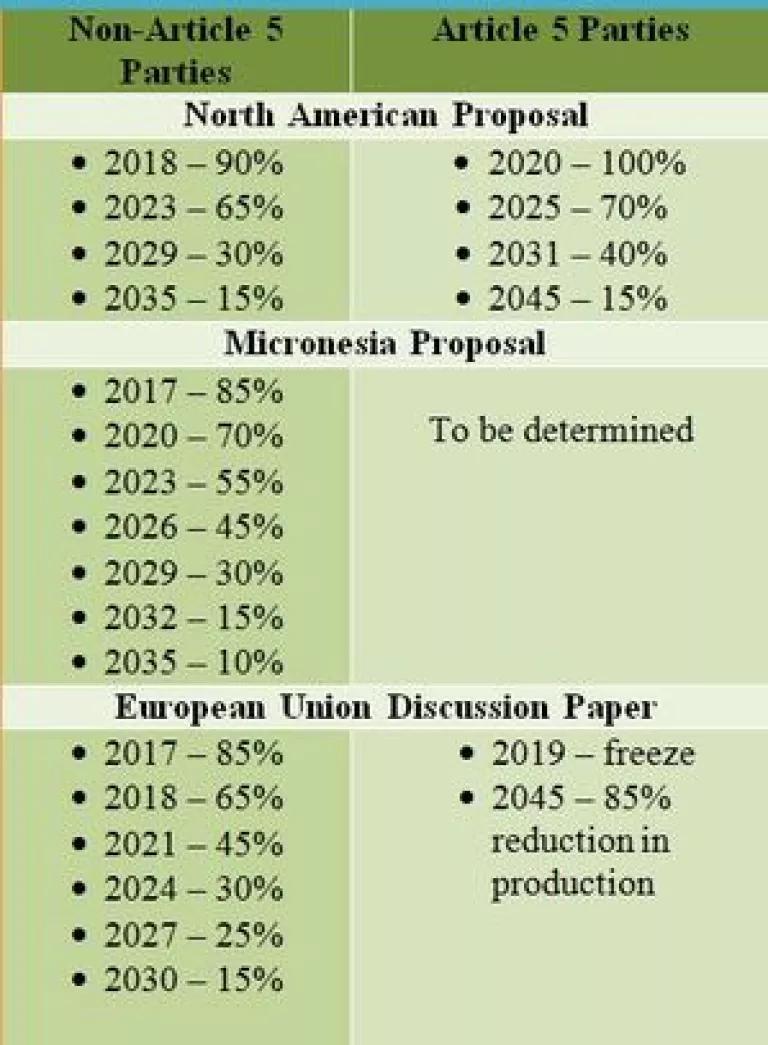Progress on Climate Change: India Takes Driver's Seat in Amending the Montreal Protocol - Part 1

In this two part blog series, we discuss the key areas for discussion, including the new proposed amendment to the Montreal Protocol by India, during the meeting of the parties in Bangkok. Part 1 is an overview and Part 2 focuses on the Indian HFC amendment proposal.
Co-authored by Bhaskar Deol and Shannon Dilley
In a significant shift, the India government joins global leaders in proposing an amendment to phase down powerful heat-trapping gases, hydrofluorocarbon (HFC). On April 20, 2015, the world leaders will meet in Bangkok, Thailand for the 35th Session of the Open-Ended Working Group (OEWG) of the Parties to the Montreal Protocol on Substances that Deplete the Ozone Layer (Montreal Protocol).
Following Minister Javadekar's address at the meeting of parties last fall as well as Prime Minister Modi and President Obama summits, the Bangkok workshop will focus solely on HFC management. HFC management is important because countries will be meeting in Paris, France in December 2015 to discuss climate change--and as HFCs are powerful greenhouse gases (GHG), it will be hard to address climate change without addressing HFCs.
In advance of the conference, NRDC, CEEW and IGSD published a draft discussion brief outlining amendment proposals to the Montreal Protocol, key features for an HFC amendment, and discussion points on moving forward with amendment proposals.
The highlights from the draft discussion brief (available here) include:
HFCs are a problem. Under to the Montreal Protocol, chemicals like chlorofluorocarbons (CFCs) and hydrochlorofluorocarbons (HCFCs) must be phased out. The default replacement chemicals are HFCs. Unfortunately, HFCs are powerful GHG with greenhouse warming potential (GWP) that can be up to 10,800 times higher than carbon dioxide (CO2). Many countries are growing exponentially and their air conditioner usage is growing equally fast. If HFC use in both room and vehicle air conditioners are not reduced substantially, climate change will occur at a much faster rate and could undo progress. Fortunately, commercially viable alternatives are emerging rapidly and transitioning to these alternatives can be safe and feasible, especially with the financial support from the Montreal Protocol's Multilateral Fund (MLF).
There is global support for an amendment. Over 108 countries, including recent support from 54 African countries, support phasing down HFCs by way of an amendment to the Montreal Protocol. Countries like China, the European Union, Japan, Australia, and the United States - the world's largest economies - are already implementing regulations and market transitions of their own. Global markets are equally active in phasing down HFCs. For example, the Consumer Goods Forum, a conglomeration of over 400 private sector companies have pledged phase down of HFCs. Both China and India have also pledged cooperation during summits with the U.S. in phasing down HFCs while using the proven instruments of the Montreal Protocol.
Amendment proposals currently on the table (the Indian Amendment is summarized in part 2 of the blog series). Proposals include the North American Proposal, Micronesia Proposal, and European Union Discussion Paper. These proposals all have similar components but different methodologies in achieving the HFC phase down goal. The following proposals include:
- The North American Proposal includes Canada, Mexico, and the United States. It would avoid an estimated 90 gigatonnes (Gt) of CO2 equivalent GHG by 2050, lists 19 HFC chemicals as controlled substances, and provides access to the MLF. There is a 10 year grace period for Article 5 Parties and the phase down schedule is different for Non-Article 5 Parties and Article 5 Parties.
- The Micronesia Proposal was submitted by the Federated States of Micronesia, a 607-island nation. It would result in the reduction of 100 billion tonnes of CO2 equivalent by 2050, lists 21 specific HFCs and hydrofluoroolefins (HFOs) as controlled substances, provides for an unspecified grace period determined by the parties, and delineates a phase down schedule for Non-Article 5 Parties. Phase down schedules for Article 5 Parties will be determined later.
- The European Union Discussion Paper was submitted by the 28 member states of the European Union. It lists HFCs generally, provides a grace period up to 15 years, puts forth a phase down schedule for Non-Article 5 Parties and outlines a freeze in consumption for Article 5 Parties short term with a reduction in production long term.

Key features for an HFC amendment incorporate the principle of common but differentiated responsibilities. Parties proposing their own amendments can include a variety of different components that take into consideration the individual circumstances of the country. However, key components so far include a grace period for Article 5 Parties, assistance from the MLF, addresses intellectual property rights, and incorporates HFC control measures in the form of baselines and reduction schedules.
The top reasons why countries should move forward with an amendment proposal is not only because there is global support, but many countries are tackling the issue individually--leading to a patchwork of regulations that interrupts export. Furthermore, global markets are already making this transition, removing countries with antiquated systems from the market. Safety and flammability risks have been addressed and are shown to be mitigated with proper safety standards, training and diligence. Most important, exponential growth demands action. At the current rate of expansion, the climate system is unable to handle the level of growth projected. Addressing HFCs under the Montreal Protocol does not interfere with the climate treaties (UNFCCC/Kyoto Protocol) as those treaties control and account for emissions whereas the Montreal Protocol removes HFC production and consumption from the markets. The two frameworks are in essence--complimentary.
Phase down is feasible with the help of the Montreal Protocol. Estimates show that a phase down can be done cost effectively, especially with the help of the MLF. A test case in Thailand showed that it will cost roughly U.S. $5.4 million. Any amendment would call for a gradual phase down, not complete phase out and it would provide financial assistance through the Montreal Protocol's MLF. This means Article 5 Parties would receive money to make this transition. For example, it cost India U.S. $87.47 million for a complete phase out of CFCs--most of which was funded by the MLF. A grace period and MLF combination would ensure that intellectual property rights are not an issue either. While many alternative chemicals are not subject to patents, alternative refrigerants that are subject to patents have multiple options that do not make patents an obstacle. For example, many companies offer their chemicals free of charge to Article 5 Parties. Also, countries can negotiate with companies applying to do business within their borders to reduce the patent effect. Last, the MLF can include patent fees as an incremental cost.
HFCs are the low hanging fruit to tackle climate change--amending the Montreal Protocol gives Article 5 Parties the tools and support mechanisms with a proven track record of an already established and functioning framework. In the end, HFCs are an issue that must be addressed to move forward on climate change. An amendment makes sense, especially given the recent development of a proposal from India, as discussed in Part 2 of this series.
